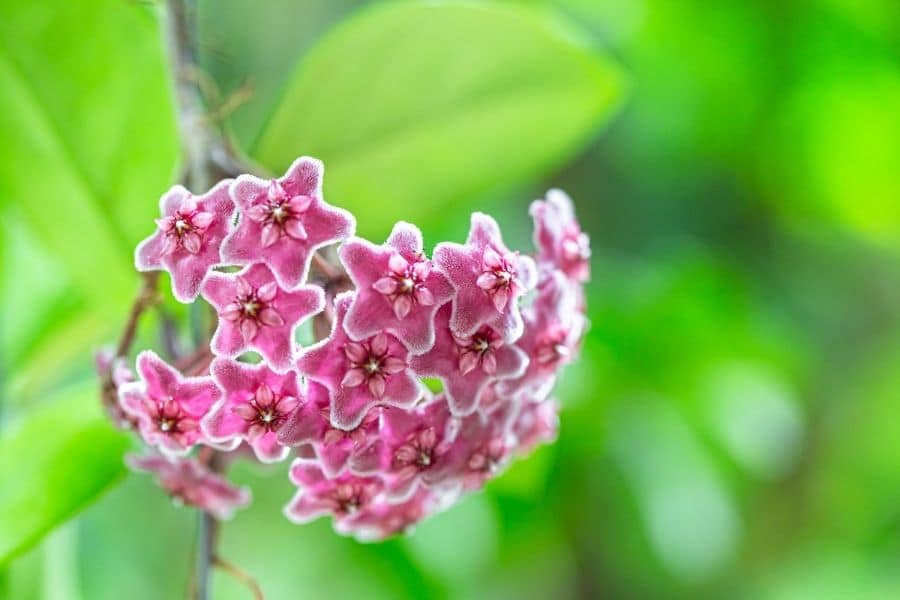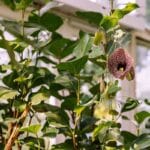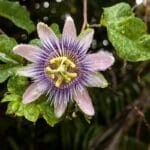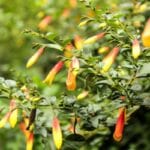The Wax plant is widely known in the horticulture industry not just for its beautiful flowers but also for its ability to grow and outlive the one who planted it. This is because aside from being an alluring indoor plant, it can also be passed on to other generations.
The wax plant or Hoya carnosa may be a wonderful and unique heirloom as long as it is cared for properly. Read on to learn more about how you can maintain and grow it.
Botanical Information
The Wax Plant goes by many names such as Hoya Plant, Honey Plant, and Porcelain Flower. These names may also vary depending on the place you live in, which is why it is important to know its scientific name, Hoya carnosa, and the family it came from, the Asclepiadaceae family or the milkweed family.
Hoya, the genus, is named after a gardener of the Duke of Northumberland in the late 1800s, Thomas Hoy. On the other hand, its species, carnosa, translates to fleshy or succulent.
Spatial Distribution
The striking presence of the Wax Plant first took the spotlight in the eastern parts of Asia, such as Japan, Malaysia, Vietnam, East China, and Vietnam. Due to its native origins, the Hoya plant thrives in USDA zones 10 to 12 and blooms seasonally.
Furthermore, this hoya vine is evergreen with a pronounced leaf shape and color that compromises the aesthetic factor when Hoya flowers are not in bloom.
Leaves
The stems of the Hoya plant are round, fleshy, smooth, and usually green or light brown. Attached to its stems, which are either climbing or hanging, are the leaves of the Wax Plant. They are thick, juicy, ovate, deep green with a satin-like finish.
Also, they can extend up to 6 inches in length and 3 inches in width. When the wax plant is said to be a ‘Variegata’, this means that the leaves have deep green leaves with white to pinkish-white margins.

Wax Plant Flowers
Picturesque blooms of white or pink flowers that are glossy and hairy are what the Hoya carnosa offers.
Since its inflorescence is an umbel, its florets are in clusters with each floret having 4 to 5 petals that form a star-like shape and is often less than an inch long peduncle. Despite the florets’ small appearance, some form clusters of up to 30 and create that bouquet-like effect.
Growth Habits
The Wax Plant, an evergreen broadleaf vine, rapidly grows under favorable conditions. Its stems are often climbing, due to the tendrils growing on young shoots that serve as anchorage for structures like trellises and rods.
Other than being part of the outdoors, some grow this plant as a hanging plant on pots wearing the stems that tend to trail down, often covering the entire pot.
On the other hand, flowering is often observed during Spring and Summer seasons. Some flowers also produce viscous sap. Studies show that potted Hoya plants tend to produce more flowers. This vine extends up to 15 feet long.

Growing and Caring Tips for Wax Plant
Sun Requirements
Despite its native origins, the Wax Plant loves to stay on shaded parts of the house or your landscape. Around 2 to 6 hours of bright indirect light is sufficient to make the plant flower.
In some indoor garden setups, solar lamps or grow lights that can give 500 to 1000 foot candles are installed.
Remember to avoid exposure to direct sunlight especially during times of the day wherein the sun is at its peak. Overexposure may cause leaf burns and wilting of the plant.
Soil Requirements
The Wax Plant prefers to grow in well-drained and slightly acidic soils with high organic matter. Making your potting medium is advised, using materials with good water holding capacity and proper aeration and drainage is of utmost importance.
Materials such as perlite, vermiculite, peat moss, and bark are suitable for this purpose. A combination of 1 Perlite: 2 Bark: 3 Peat Moss is ideal for most indoor plants. You may also consult your local florists or garden supply store for a pre-mixed soil medium for indoor plants.

Water Requirements
The key to making the Wax Plant flourish is proper watering technique. Generally, the proper way to water this plant is by letting the planting medium dry for around 1 to 3 cm deep before watering. This may vary depending on the type of planting medium, planting pot, and season.
Since this plant is often planted in hanging pots, make sure that the pots have holes where the excess water can sift through. If there are no holes, the amount and frequency of watering become more crucial to prevent root rot.
During hotter seasons, a bit more water may be given. While in colder seasons, less water is needed.
Temperature and Humidity
Hoya plants thrive well in warm humid environments. Some plant owners put humidifiers near their plants since indoor environments need modifications to suit plant growth.
The plant grows beautifully in temperatures around 18 degrees Celsius at night and 27 degrees Celsius during the day. Coming from the tropics, this plant does not perform well in cold temperatures. When the temperature reaches 10 degrees or less, it will turn the plant dormant.
Fertilizer Application
The monthly application of potassium-rich fertilizers during spring will be beneficial for the plant’s growth. Liquid fertilizers and slow-release fertilizers may also be applied. Make sure to follow the right amount indicated in product labels.
Propagation
To propagate Hoya plants, select healthy stem cuttings with at least two nodes. Use clean, sharp scissors to cut just below a node. Remove any waxy foliage from the lower portion of the cutting.
Allow the cutting to callous for a few hours to prevent rotting. Plant the cutting in a well-draining potting mix, ensuring the node is buried in the soil. Keep the soil consistently moist but not waterlogged, and place the cutting in indirect bright light.
Rooting typically occurs within a few weeks. Once roots have established, transplant the cutting into its own pot and continue caring for it as you would a mature Hoya plant.
Other Maintenance Activities
Pruning is seldom done for the Wax Plant. Occasional removal of dead, damaged, and dried plant parts is a default activity for most plants. Furthermore, mulch applications are done during hot seasons to retain moisture.

Common Cultivars
Hoya carnosa ‘Rubra’
Also known as the Krimson Queen or Krimson Princess, this cultivar is a crowd favorite for its attention-grabbing leaf colors. Its waxy leaves are variegated with the colors pink, yellow, cream, and green. It loves to be in a spot wherein bright indirect sunlight is present and highly disapproves of overwatering.
Remember to check up on Hoyas and its potting medium to know when to water.
Hoya carnosa variegata ‘Tricolor’
This is the cousin of the Krimson Queen with its variegated leaves that add white and pink pigment to its deep green leaves. There are instances when this plant wants to show off and produces light pink stems with pure white leaves.
To make the Wax Plant happy, place it in areas that have brought but indirect sun. Avoid putting it at the back as it does not like low or medium lights near chilly windows.
Landscape Use
In planting Wax Plants in the landscape, choosing the right area to plant is crucial due to its sensitivity to high temperatures and exposure to full sun.
It may be planted in areas where shade from existing plants or man-made fixtures are present. In addition, grouping it with plants that have the same requirements will make maintaining them easier.
On the other hand, having the vine as an indoor plant is a common practice. As some porcelain flowers produce a sticky sap, it is recommended that it is placed away from pieces of furniture that may be damaged.
Another thing to consider is the indoor environment. Place the plant away from direct sunlight from doors and windows. Some keep it in a room and set up grow lights and humidifiers to alter the environment.
For tropical plants such as Hoyas, it is imperative to observe their behaviors carefully and know their requirements that are mentioned above. If planned to be an heirloom, the plant itself should be passed on along with the information acquired through years of maintaining and caring for it.
FAQs
How often do I water my Hoya Carnosa?
Water when the top inch of soil feels dry, typically every 1-2 weeks, but frequency may vary based on factors like temperature, humidity, and pot size.
How do I get my Hoya Carnosa to bloom?
Provide bright, indirect sunlight, allow the potting soil to dry slightly between waterings, and avoid overfertilizing. Cool night temperatures (55-65°F) and reduced watering in fall may also encourage blooming.
What is the lifespan of a Hoya carnosa?
With proper care, Hoya carnosa can live for several decades, making it a long-lived houseplant.
What time of year does Hoya carnosa bloom?
Hoya carnosa typically blooms in late spring to early summer, although blooming may occur at other times of the year depending on growing conditions and care.
For more vines to grow, check our list of climbing vines.
See more: Hoya australis care
*image by lobster20 & valerypetr & kaewphoto/depositphotos






